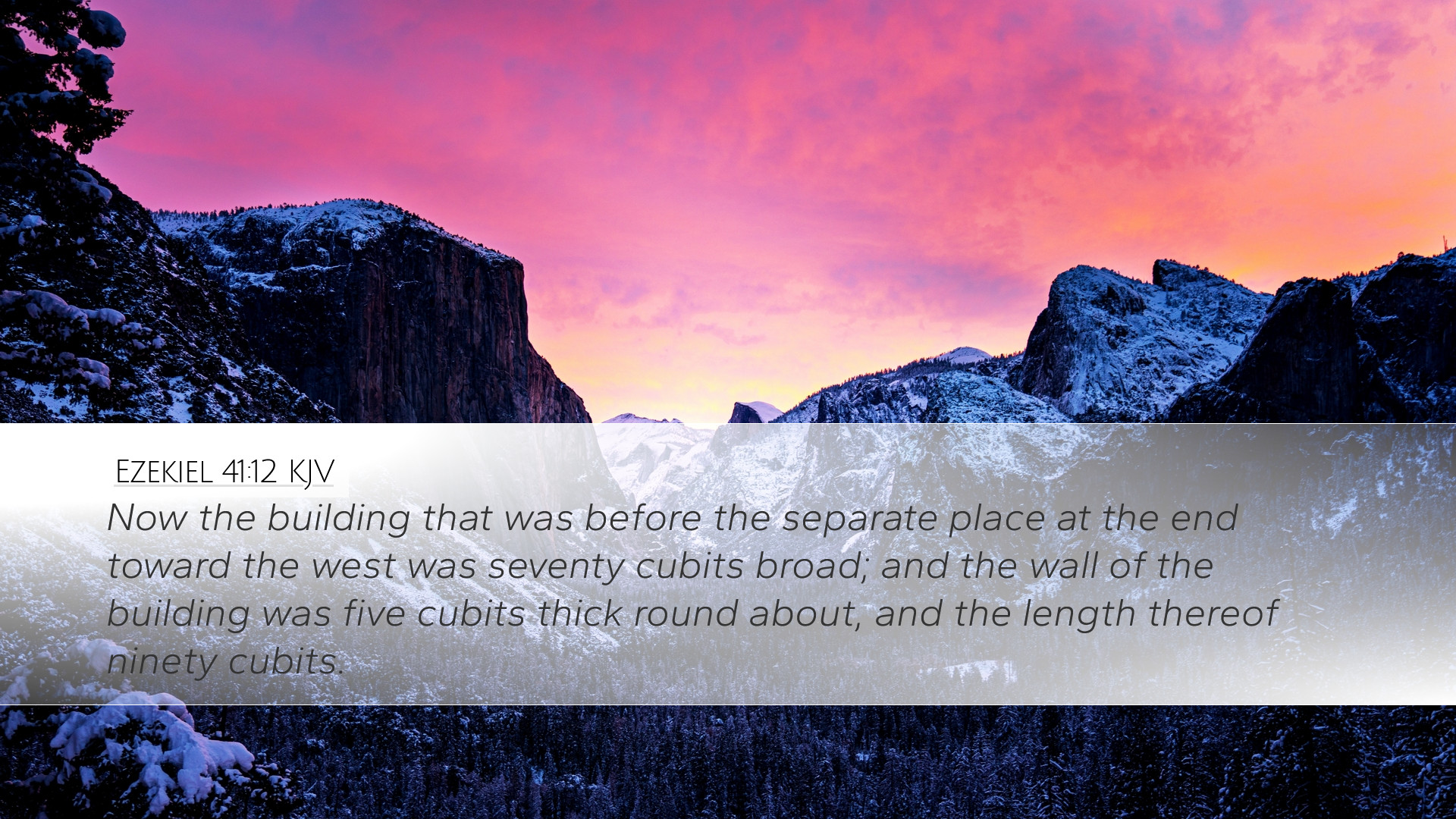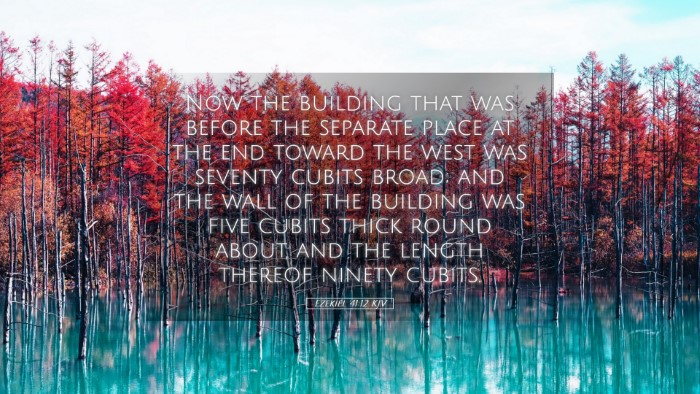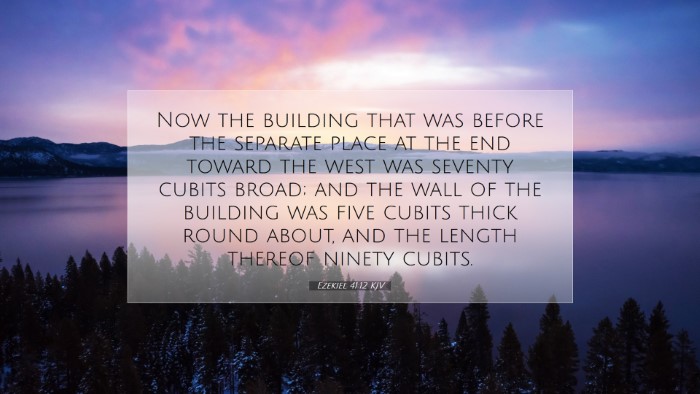Bible Commentary on Ezekiel 41:12
Ezekiel 41:12 provides a detailed description of the temple structure as revealed to the prophet Ezekiel. This verse reads:
“The building that was before the separate place at the end toward the west was seventy cubits broad; and the wall of the building was five cubits thick round about, and its length ninety cubits.”
(Ezekiel 41:12, KJV)
The intricacies in God's design for the temple symbolize His order, purpose, and desire to dwell among His people. In examining this verse, we draw insights from reputable public domain commentaries, offering meaningful perspectives to pastors, students, theologians, and Bible scholars.
Contextual Background
To fully grasp the significance of Ezekiel 41:12, one must consider the historical and theological context of Ezekiel's prophecies. Ezekiel, a priest and prophet during the Babylonian exile, was tasked with delivering God’s message to the Israelites. The temple's vision is not merely architectural; it reflects God’s covenantal presence and His future restoration plans for His people.
Commentary Insights
Matthew Henry's Commentary
Matthew Henry emphasizes the importance of the temple as a place of God's presence on earth. In his commentary, he discusses:
- The Significance of the Structure: Henry points out that the dimensions of the temple illustrate not only its grandeur but also its intended function as a holy place set apart from the common. The exact measurements instill a sense of reverence towards God’s dwelling.
- Representation of Divine Order: The meticulous details signify God's order. As Henry states, “the Lord is a God of order, not of confusion,” highlighting the necessity for the temple to reflect heavenly ideals.
Albert Barnes' Notes on the Bible
Albert Barnes provides an analytical view of the architectural details presented in Ezekiel 41:12. His insights illuminate several key points:
- The Dimensions of the Temple: Barnes notes the specific measurements and interprets them as symbols of spiritual integrity. The size of the building may illustrate the vastness of God’s grace and mercy towards His people.
- The Wall Thickness: The five cubits thick wall signifies protection and separation. Barnes expresses that it symbolizes the barriers between the sacred and the profane, underscoring the need for holiness when approaching God.
Adam Clarke's Commentary
Adam Clarke’s commentary enriches our understanding of this verse by focusing on several dimensions of theological significance:
- The Representation in Vision: Clarke explains that Ezekiel's vision serves as a promise of restoration for the Israelites. The temple's design speaks to God’s commitment to inhabit among His people once again.
- Typological Interpretation: Clarke discusses the typological implications of the temple structure, aligning it with New Testament teachings on Christ being the true temple and His body as the dwelling place of the Holy Spirit.
Theological Implications
The examination of Ezekiel 41:12 extends beyond architectural details into profound theological implications:
- God’s Presence: The temple is a symbol of God’s intention to be with His people. This theme of divine presence resonates throughout both the Old and New Testaments, emphasizing God's desire to dwell among humanity.
- Holiness and Worship: The separation between sacred and secular places in the temple structure signifies the importance of holiness in worship. It calls individuals and communities to approach God with reverence and purity.
- Restoration and Hope: For the exiled Israelites, this vision is a beacon of hope, assuring them of restoration and God's continued faithfulness. The temple stands as a reminder of the covenant relationship that God seeks to maintain with His people.
Conclusion
In conclusion, Ezekiel 41:12 serves as a rich text for understanding not only the architecture of the temple but also the deeper truths about God’s unwavering commitment to His people. The combined insights from Matthew Henry, Albert Barnes, and Adam Clarke provide a multifaceted approach to interpreting this verse. For pastors, students, theologians, and Bible scholars, this exploration of Ezekiel’s vision calls for reflection on God’s holiness, presence, and the hope of restoration.


